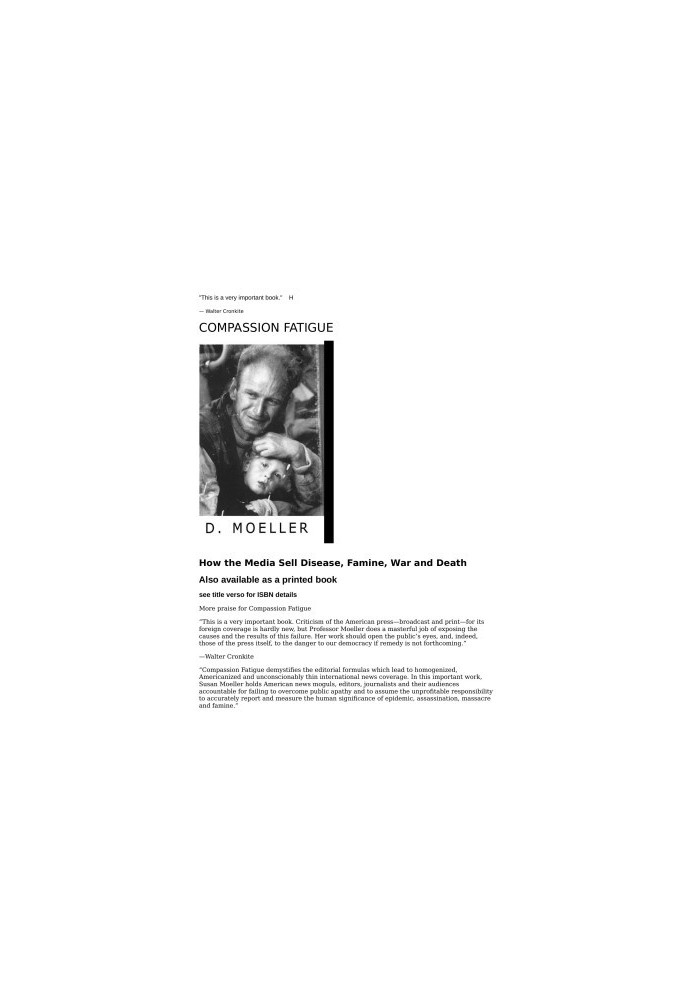Compassion Fatigue: How the Media Sell Disease, Famine, War and Death
 Instant download
Instant download
after payment (24/7)
 Wide range of formats
Wide range of formats
(for all gadgets)
 Full book
Full book
(including for Apple and Android)
Compassion fatigue ratchets up the criteria for stories that get coverage. To forestall the I’ve-seen-it-beforesyndrome, journalists reject events that aren’t more dramatic or more lethal than their predecessors. Or,through a choice of language and images, the newest event is represented as being more extreme or deadly orrisky than a similar past situation.Compassion fatigue tempts journalists to find ever more sensational tidbits in stories to retain the attention oftheir audience.Compassion fatigue encourages the media to move on to other stories once the range of possibilities of coveragehave been exhausted so that boredom doesn’t set in. Events have a certain amount of time in the limelight,then, even if the situation has not been resolved, the media marches on. Further news is pre-empted. No newnews is bad news.Compassion fatigue is not an unavoidable consequence of covering the news. It is, however, an unavoidableconsequence of the way the news is now covered. The chapters that follow identify the ruts into which themedia have fallen in their coverage of international crises. Through these studies, the media’s repetitivechronologies, sensationalized language and imagery and Americanized metaphors and references are comparedand exposed. Through these studies the inevitability of compassion fatigue is made apparent.
LF/775093/R
Data sheet
- Name of the Author
- Moeller
Susan D. - Language
- English
- ISBN
- 9780415920971
- Release date
- 1998


![[Sevenfold Sword 02] •...](https://lionbook.net/2006681-thickbox_default/-sevenfold-sword-02-swordbearer.jpg)





![[Ghost Exile 5.50] • Ghost...](https://lionbook.net/1305318-thickbox_default/-ghost-exile-550-ghost-mimic.jpg)

![[Cloak & Ghost 01] • Blood...](https://lionbook.net/1527836-thickbox_default/-cloak-ghost-01-blood-ring.jpg)



![[Cloak Games 02] • Frost Fever](https://lionbook.net/1788190-thickbox_default/-cloak-games-02-frost-fever.jpg)










